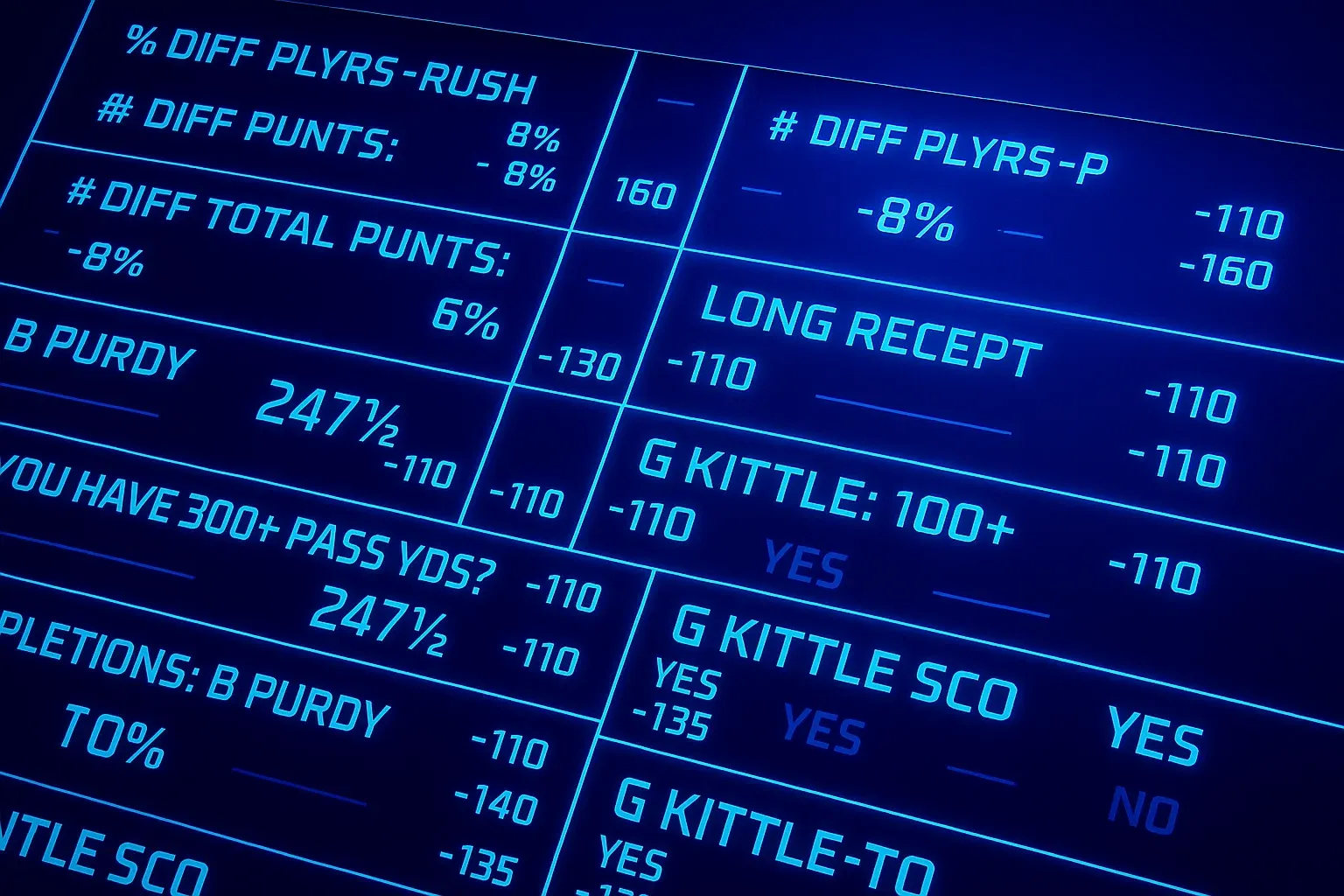The Foundation of Sports Wagering

Betting 101: The Foundation of Smart Sports Wagering
If you’re new to sports betting, consider this your first step into the sharp end of the pool. This isn’t about picking your favorite team or player and hoping it hits, or following your gut. It’s about understanding the numbers, reading the market, and making informed, disciplined bets.
Let’s break down the fundamental bet types, teach you how to read American odds, and give you a strong foundation before we dive deeper in future guides.
Before you can even think about line shopping or promo stacking, you need to get familiar with the basics. These are the three most common types of bets you’ll encounter:
This is the simplest wager to understand: you’re betting on which team will win the game outright.
Example:
The minus sign indicates the favorite. In this case, you’d need to bet $220 on the Bills to win $100. The plus sign shows the underdog. A $100 bet on the Jets would return $180 profit if they win.
It's important to understand that each line reflects implied probability. +180 looks juicy on paper, but it means the Jets are expected to win less than 36% of the time.
The spread levels the playing field. You’re not just betting who wins, but by how much.
Example:
If you take the Cowboys, they need to win by 7 or more. If you bet the Giants, they can win outright or lose by 6 or fewer.
Spread betting is a staple for sharp bettors. There's less juice on spreads than moneylines, which creates more opportunities for value. More on this later.
You’re betting on the combined score of both teams. Doesn’t matter who wins, just how many points hit the board.
Example:
If the final score is 27-21 (48 points), Over bettors cash. If it’s 20-17 (37 points), Under wins.
Sharp advice: Never bet the Under, it's un-American. Nothing says "I love football" like hoping nobody scores for 3 straight hours. With that said, the public typically bets the Over, which can create opportunities for Under bettors. Something to consider for later.
If you’re betting in North America, you’ll be dealing with American odds. Here’s the breakdown:
Decimal Odds? You might see decimal odds in international markets (1.91 instead of -110). We’ll stick with American odds throughout this guide, but it’s worth being familiar with both.
Juice, also known as vig or vigorish, is the sportsbook’s built-in edge. It’s how they make money regardless of which side wins.
Example: A typical Over/Under or point spread will be listed at -110 on both sides. That means you need to risk $110 to win $100. The extra $10 is the juice.
This might not seem like much, but over time it adds up. To break even betting at -110 odds, you need to win 52.38% of your bets. Win less than that, and the vig slowly eats away at your bankroll.
Some markets have even higher juice, especially niche props or parlays. Always check the odds and know what you’re paying.
Not all books have the same juice. Some sportsbooks have reduced juice, and are typically considered sharper books. Some may list a spread at -108 or -105 instead of -110. That small difference can compound over hundreds of bets. Shopping for the lowest juice is one of the simplest ways to increase your long-term ROI. We’ll show you how in the Line Shopping guide, and talk more about different sportsbooks later.
We won’t get too deep here—that’s for the Getting Started section—but know this: if you don’t manage your bankroll, you won’t last. Sports betting is about probability, and hot and cold streaks will happen. Set a unit size (typically 1% of your total roll), and don’t chase losses. Consistency beats heat checks.
You’ll hear about these often:
We’ll unpack all of this in future guides.
You’ve the basics. In the next sections, we’ll go deeper into a variety of topics covered here.
This is a long game. Betting 101 is just your first rep in the weight room.
Stay sharp.